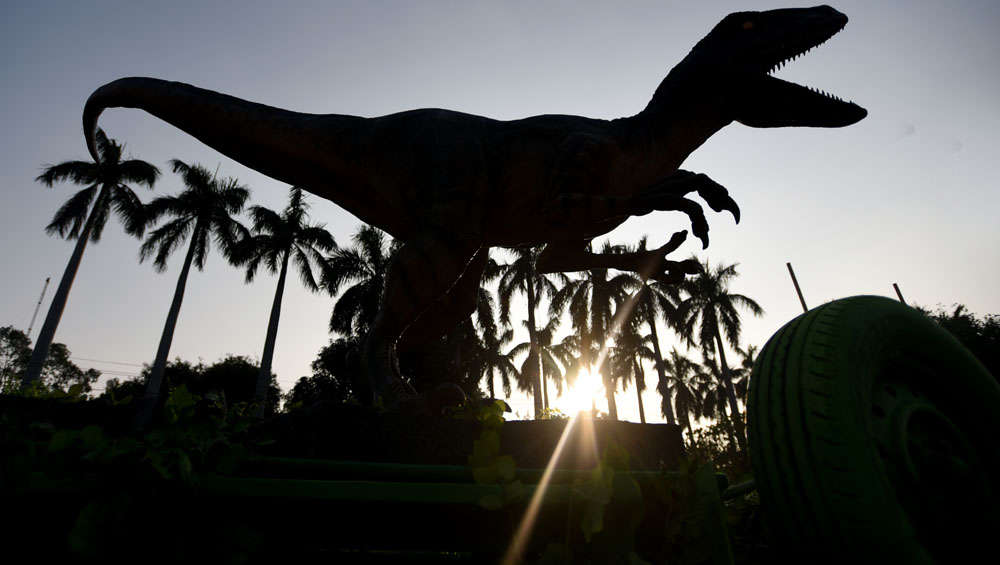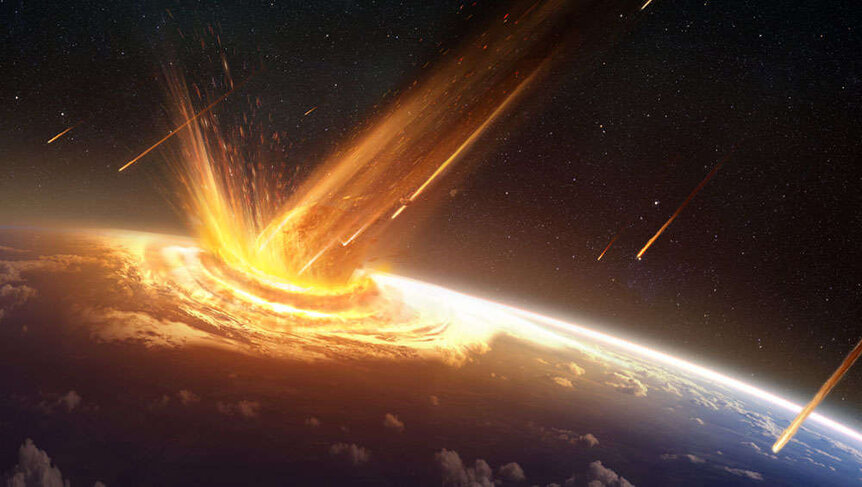Create a free profile to get unlimited access to exclusive videos, sweepstakes, and more!
Asteroid dust is the final proof that a monster space rock destroyed the dinosaurs

What really annihilated the dinosaurs? Was it a comet? Volcanic eruptions? Nuclear winter? Aliens? That infamous asteroid? ... all of the above?
If you said it was the asteroid, you’re right, though the seven-mile-wide space rock that head-butted Earth did trigger volcanic eruptions which released enough ash into the atmosphere to block out sunlight and bring on a nuclear winter (more on that later). There was always some debate about whether something else was involved, including a recent comet hypothesis. Not anymore. Dust left in the asteroid’s wake 66 million years ago has finally proven that aftermath of the Chicxulub asteroid really was what led to the dinosaurs’ demise.
An immense crater that was eventually drowned by the sea is all that remains of the lethal asteroid. Residual dust from the Chicxulub asteroid was a chemical match for a section excavated from the crater itself. That section comes from the exact time the dino apocalypse hit. In that dust was iridium, which is rare on Earth but can be common in certain types of extraterrestrial asteroids. Meaning, this is the ultimate proof of why Godzilla lizards aren’t roaming around today.
“The Cretaceous-Paleogene (K-Pg) mass extinction is marked globally by elevated concentrations of iridium, “ said geochemist Steven Goderis, who led a study recently published in Science Advances, adding that, “the iridium layer provides a key temporal horizon precisely linking Chicxulub to [the Cretaceous-Paleogene mass extinction] worldwide.”
Dust containing iridium was scattered all over during the dinopocalypse that was otherwise known as the Cretaceous-Paleogene mass extinction. Iridium showing up where it wasn’t expected to be is now referred to as the “iridium anomaly”, since the element doesn’t occur on its own too often on Earth, but iridium particles blasted so far that they landed hundreds and even thousands of miles away from the impact site. Unnatural deposits of iridium found all over the planet were what sparked the asteroid hypothesis to begin with. Even with ideas about comets and spontaneous natural disasters floating around, an asteroid remained suspicious.
Though the iridium in the space dust and the surrounding limestone was what convicted the asteroid, there were other elements associated with asteroids that supported the conclusion Goderis and his team came to. These mostly siderophile (easily bond to iron) and chalcophile (easily bond to sulfur) elements were also found all over the planet at the same sites where there was an unusual amount of iridium. Iron-nickel sulfides are associated with deposits of these elements. These sulfides actually exist in the majority of star systems that we know of. Most asteroids and meteorites also contain iron and nickel alloys which also have smaller amounts of cobalt, copper, and zinc.
When the Chicxulub asteroid plummeted to Earth, it smacked into the ground with such force that it kicked up tons of ash, not to mention tsunamis and volcanoes. Around 75 percent of life on Earth was doomed. If enormous waves or outbursts of lava didn’t kill things first, a thick layer of ash, combined with even more ash from all the erupting volcanoes, shrouded the atmosphere and kept out most of the solar light and heat that tried to penetrate it. The planet froze. Without light, plants cannot photosynthesize, and the entire food chain went down from there. There was also possibly acid rain from sulfur the asteroid is thought to have sent into the clouds.
Somehow, the Chicxulub crater ended up being a strange haven for life not long after the disaster. Goderis believes nanoplankton and other microorganisms soon began to thrive from nutrients that seeped in from land.
“The rapid adaptation of life to the early Chicxulub crater demonstrates a fast return to low-energy environments in the crater and a resiliency of life under extraordinarily harsh conditions,” he said. “Impact craters such as Chicxulub thus provide unique habitats for life, which may also have been present on the early Earth.”
So life found a way, things evolved, and here we are. At least we are in no real danger of an asteroid strike for at least the next hundred years. By then we might all be watching it from some parallel universe.















